基于.NET的实验室设备管理系统的设计
无需注册登录,支付后按照提示操作即可获取该资料.
基于.NET的实验室设备管理系统的设计(包含任务书,开题报告,进度检查表,毕业论文17000字,程序代码,数据库)
摘 要
学 校实验室设备管理系统是典型的设备信息管理系统(EMIS),要求能为学校实验室管理提供信息化动态化的管理,方便学校实验室设备的管理工作,提高学校设 备管理质量和使用效率。而且系统应符合设备管理的有关规定,包括机房的管理和使用记录、设备的管理及出入库记录、设备的维修和报废记录和设备的借用归还功 能等。能满足日常工作的基本需要,并达到操作过程中的直观、方便、实用和安全等有关要求。此系统能够完成设备基本信息的输入维护和查询,并提供系统的维护 功能,使用户能方便进行数据查询和设备维护。本文对设备管理系统进行了全面的分析与实现,包括设备管理系统的需求分析;系统环境的选择;视图层、控制层、 模型层工作流程的分析与编码实现,视图层采用JSP技术来实现,封装了常用的页面标签与页面验证模块;控制层由Server响应客户端的请求,做分发处 理;模型层由JAVABeans做业务逻辑的处理。本系统框架层次清晰,功能较为丰富,有鉴于简单操作和界面的可视化的优势。并借助于网络的优势。本系统 采用asp.Net语言,后端采用的是SQL Server 2000 数据库来完成实验室设备管理系统的设计与实现,通过数据操作模块能对本系统的相关信息进行各种操作,界面直观简洁。
关键词:asp.Net;SQL Server 2000 数据库;实验室设备管理系统
Abstract
School laboratory equipment management system is a typical device information management system (EMIS), to provide dynamic management of information technology for the school laboratory management to facilitate the management of school laboratory equipment, improve the quality of school facilities management and efficiency of use. Moreover, the system shall comply with the relevant provisions of the Device Manager, including the engine room of the management and use of records, equipment management and storage of records, equipment maintenance and obsolescence of records and equipment to borrow the return of function. Able to meet the basic needs of daily work, and the intuitive operation, convenient, practical and safety-related requirements This system is able to complete the input of the device basic information to maintain and query, and system maintenance functions, allowing users to facilitate data query and equipment maintenance. A comprehensive analysis and implementation of equipment management system, including equipment management system needs analysis; choice of the system environment; view layer, control layer, the model layer workflow analysis and coding, view layer using JSP technology to achieve, the package page label with page validation module; control layer in response to the client's request by the Serviette, distribution processing; model layer by JAVABeans business logic processing. The framework of the system level of clarity is more feature-rich in view of the advantages of simple operation and interface visualization. With the advantage of the network, the system uses the asp.Net language, back-end is SQL Server 2000 database to complete the design of laboratory equipment management system, and information on the system to perform various operations through data manipulation module, the interface is intuitive and simple.
Key words: asp.Net; SQL Server 2000 database; laboratory equipment management system
本课题应达到的要求
本系统操作简单,易于理解,只需通过简单培训,上手较快,一般只要懂一些网络维护基础知识的人都可
实 验室设备管理系统开发主要包括后台数据库的建立和维护以及用户应用程序的开发两个方面。对于前者要求建立起数据一致性和完整性强、数据安全性好的库。而对 于后者则要求应用程序功能完备,易使用等特点。经过分析,我们使用asp.Net语言,后台使用的是SQL Server 2000 数据库,用面向对象的设计思想,开发和设计了一套设备信息管理系统,本系统操作简单,方便,首先在短时间内建立系统应用原型,然后,对初始原型系统进行需 求迭代,不断修正和改进,直到形成用户满意的可行系统。
实验室设备管理系统的大致功能模块介绍如下:
⑴ 机房管理:
对机房的信息管理,机房使用记录管理,可进行增删改等操作。
⑵ 库房管理:
包括:设备基本信息管理,设备出入库操作,设备库存管理,设备出库记录,设备维修记录管理和设备借还记录管理。
⑶ 相关统计:
包括:机房使用率统计,设备更新率统计,设备维修记录查询和设备报废记录查询。

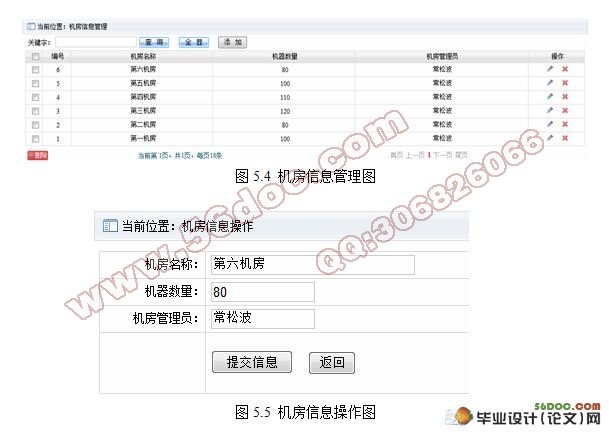
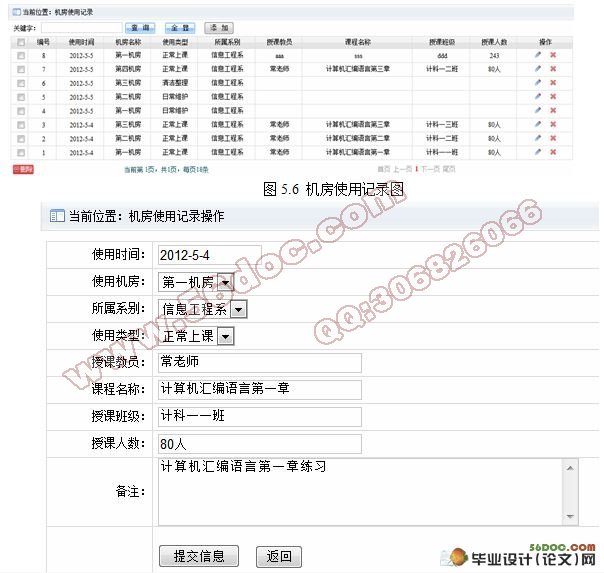
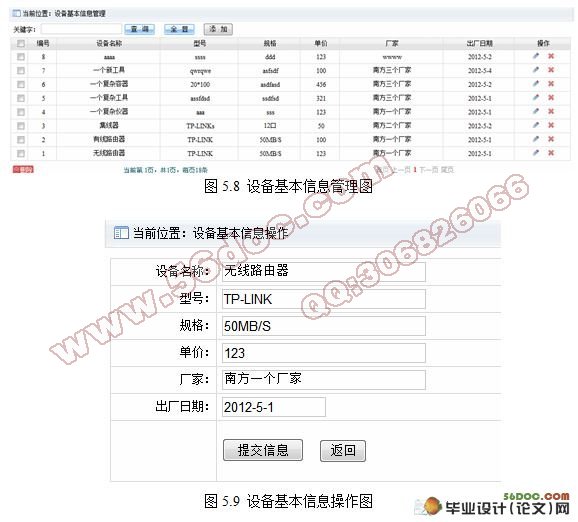
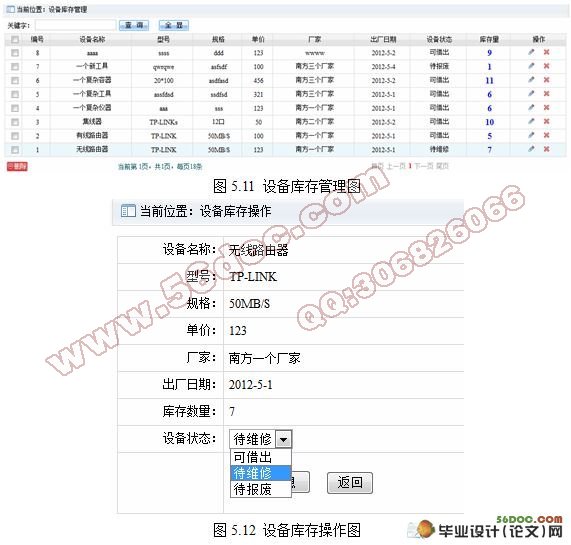
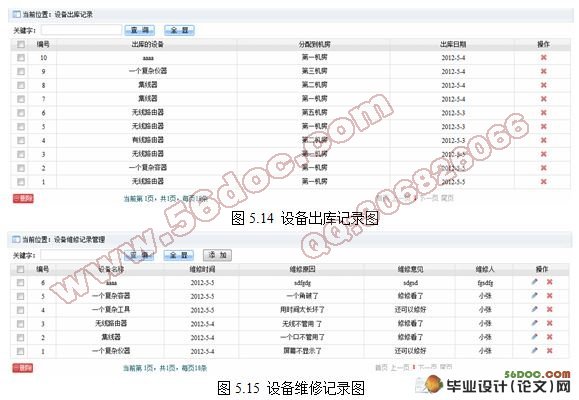
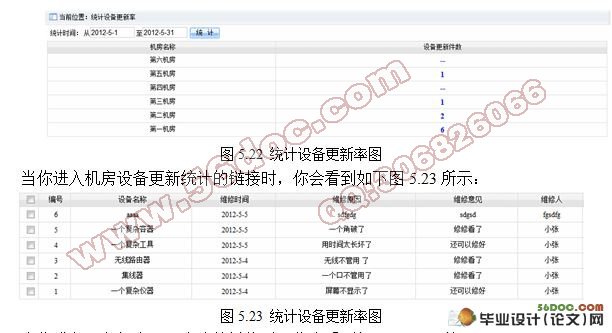
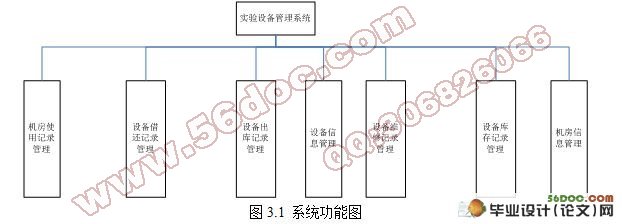
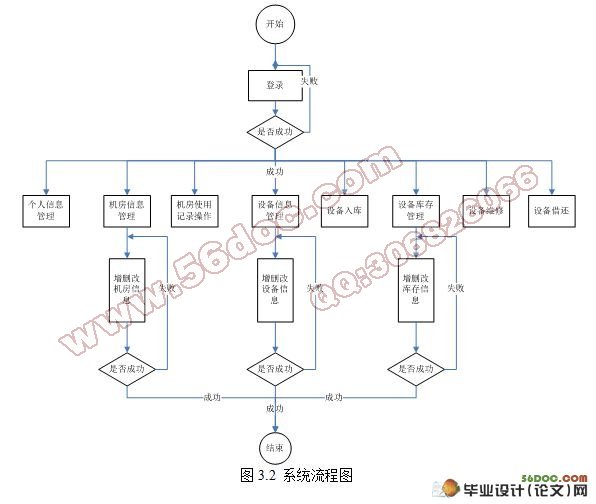
目 录
摘 要 III
ABSTRACT IV
目 录 V
1 绪论 1
1.1 本课题的研究内容和意义 1
1.2 国内外的发展概况 1
1.2.1 技术可行性 1
1.2.2 经济可行性 1
1.2.3 营运可行性 1
1.3 本课题应达到的要求 2
2 相关技术与开发工具 3
2.1 asp.NET简介 3
2.2 asp.NET的安全性 4
2.3 SQL SERVER 2000简介 4
2.4 T-SQL语言介绍 4
2.5 系统开发的环境介绍 5
3 系统需求分析 7
3.1 需求分析概述 7
3.2 后台整体功能模块分析 7
3.3 系统流程图 8
4 系统数据库设计 9
4.1 数据库介绍 9
4.2 数据库设计概述 9
4.3 概念结构设计 10
4.4 逻辑结构设计 10
4.4.1 实体E-R图 10
4.4.2 将E-R模型转换为关系模型 12
4.4.3 数据模型的优化 13
4.4.4 设计外模式 13
4.5 物理设计 16
4.6 数据库的实施 16
4.7 数据库的运行及维护 16
5 系统的设计与实现 18
5.1 系统后台设计要达到的目标 18
5.2 系统总体设计分析 18
5.3 系统详细功能模块的设计与实现 18
5.3.1 系统登录 18
5.3.2 系统管理 20
5.3.3 机房管理 22
5.3.4 库房管理 24
6 结论与展望 34
6.1 结论 34
6.2 不足之处及未来展望 34
致 谢 36
参考文献 37
